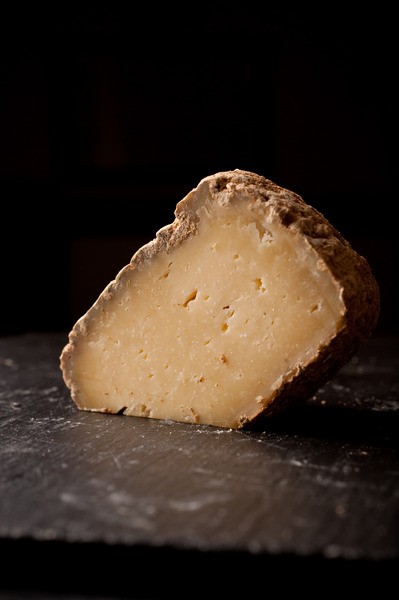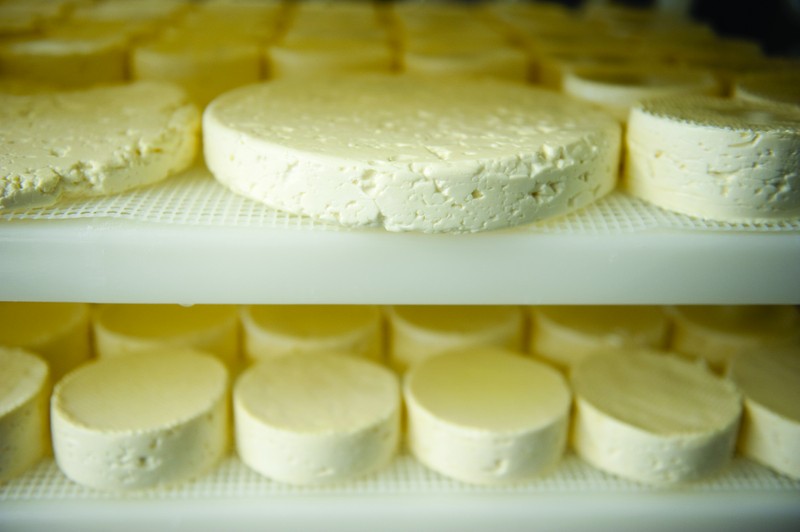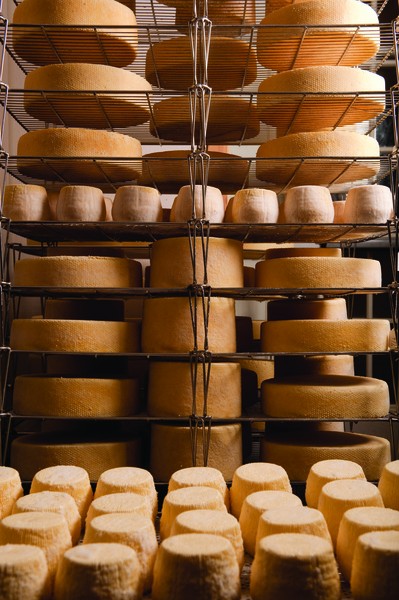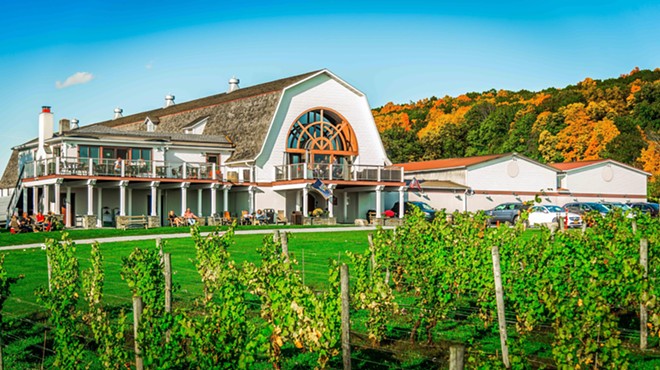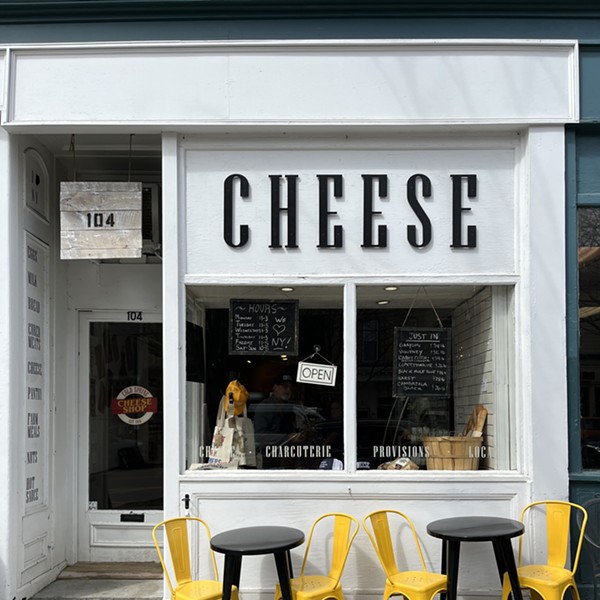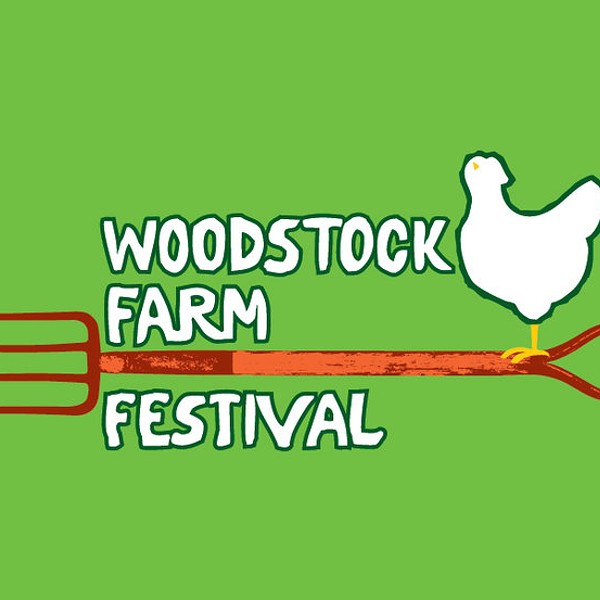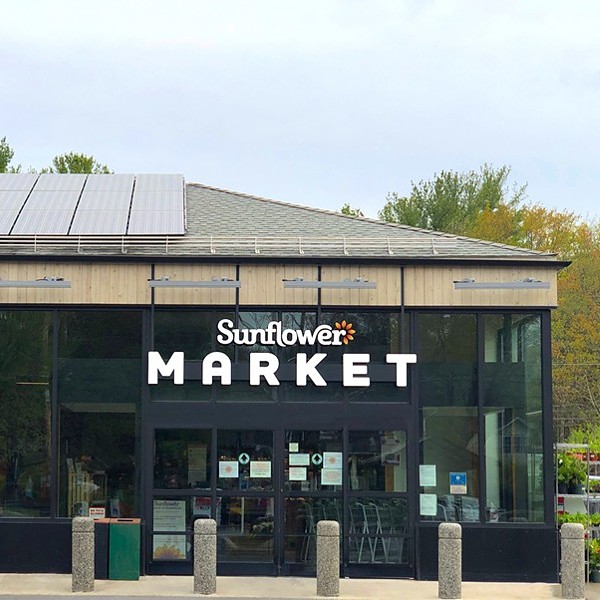It’s a hard time to be a dairy farmer. Milk prices are currently so low that the market pays less per gallon than it costs to produce. In response to this untenable situation, Senator Gillibrand recently announced that revamping the dairy-pricing system is a priority, and she hopes to have fundamental reform written into the next farm bill. In the meantime, one of the ways in which farmers have hedged against the volatility of the market—and actually earned some money for their labor—is through value-added processes, turning their milk into ice cream, yogurt, and cheese. We are fortunate that our region is blessed with some extraordinary cheese makers, and any fan of fine cheese can now be completely satisfied with the quality and variety of artisanal products to be found here. It is officially time for us to stop buying cheese from Europe.
Jessica Applestone is the co-owner and cheese buyer at Fleisher’s Grass-Fed Meats in Kingston. “If you include the Berkshires, Vermont, and other parts of New York,” she says, “you can definitely say that our region is world-class.” Fleisher’s carries cheeses from our immediate vicinity as well as first-rate efforts—like Berkshire Blue and Jasper Hill Farm’s Bayley Hazen and Constant Bliss—from a little farther afield. She considers the whole Northeast to be fair game for locavores, and tries to find the best examples of different styles. And there are many to choose from; she cites 3-Corner Field (Shushan; sheep’s milk cheeses) Cobb Hill (Hartland, Vermont; Alpine and Caerphilly) Cato Corner (Colchester, Connecticut; a variety of raw cow’s milk cheese) Thistle Hill (Pomfret, Vermont; organic raw-milk Alpine) and Tonjes Dairy (Calicoon; Ricotta) as some of her favorites.
In our area, Colin McGrath at Sprout Creek Farm in Poughkeepsie is doing some impressive work. Young, energetic, and with a clear passion for his job, he says his goal is “to let the milk speak for itself.” McGrath has an intuitive style of cheese making, which he describes as “70 percent feel, 30 percent science” that relies more on his senses than pH meters, and he treats his process much as an artist might, allowing accidents and improvisation to spark ideas for new ways to manipulate the variables that govern the result. In the chilly aging rooms, he acts as a conductor of microbes; through different treatments of each size wheel, he makes them hospitable to different combinations of the organisms that will govern the flavor, texture, and appearance of each type as they ripen. “I respect tradition, but I’m not bound by it,” he says, and the lack of any constraints—like the strict appellation d’origine controlée (AOC) system that governs wine and cheese in France—allows him to follow his inspiration anywhere it leads.
McGrath and one assistant make 40,000 pounds of cheese a year. In his five years at the farm he has expanded the product line far beyond the original four to include a few fast-selling goat cheeses (fans know to come right to the farm to get them) and a full spectrum of raw cow’s milk cheese ranging from the milder, Havarti-like Bogart through the popular, somewhat sharper Toussaint and Ouray to the downright masterful Eden, which has duplicated the silky reek of Morbier from Eastern France. There’s also a blue, Camus—pun intended—that would, on a board next to a wedge each of Bayley Hazen, Berkshire Blue, and Old Chatham’s Shaker Blue, and accompanied by a sticky wine, make as elegant and interesting a dessert as one could hope for.
Better with Age
The Real Live Food Company, currently based at Ronnybrook Dairy in Ancramdale (themselves the source of excellent milk, yogurt, and ice cream) makes farmer’s cheese and queso blanco with added probiotic cultures, but the real standout is their Camembert. At two months, it’s a ringer for the original, but at four to six months it takes on a darker patina and develops some serious ammonia overtones; lovers of the pungent should look for the “Noir” and get their stank on in fine style. Co-owners Rory Chase and Peter Destler grew up right down the road, and moved back home from California a couple of years ago to help keep Chase’s family’s farm in business. They are about a month away from moving into their own facility, just down the hill from Ronnybrook, and they expect to be able to quadruple their production as soon as they move. Among other things, they plan to start aging some Camembert for a year to make a hard cheese for shaving or grating. The Old Chatham Sheepherding Company also makes a Camembert, but from a blend of sheep and cow milk, and it’s safe to say that trying to choose a favorite between these two is not the worst way to pass an hour with friends at the end of a good meal.
Nettle Meadow, up in the Adirondack foothills, also makes a lovely soft fromage blanc in several flavors, in addition to the sublime, better-than-Brie Kunik and its Crane Mountain, a chèvre that’s like a tangy chalk pudding and evolves in an interesting way with age. Another regional standout is Dancing Ewe Farm in Granville, where Jody and Luisa Somers make extraordinary Caciotta and Pecorino; their aged Pecorino is a fine grating cheese, and, along with Sprout Creek’s Barat, obviates the need for traditional Italian imports. Though Dancing Ewe Farm is in Washington County, there’s a local source: The couple can be found at the Rhinebeck Farmer’s Market every Sunday.
Jasper Hill Farm—in Vermont’s Northeast Kingdom—has recently opened a state-of-the-art affinage facility where nearby producers can bring their cheeses to age under ideal and expertly tended conditions. This allows small outfits to make more cheese, since they are not burdened with aging their inventory, and thus do more business without sacrificing quality. The makers in our area all expressed a strong desire for a similar situation here, since the quality-versus-quantity equation is a very real concern for all of them. They hope that effective reform of the law and an increase in demand will allow for more investment in this type of infrastructure, which will in turn allow more start-up artisans to enter the market.
Getting Really Cheesy
While many of these cheeses are meant for eating as they are, there are plenty suited for cooking as well. New York Cheddar is ubiquitous, of course, though not always artisanal. Fresh mozzarella can be found locally, and Hawthorne Valley Farm in Ghent makes organic staples like cheddar, Alpine, and Edamer that are perfect for sandwiches or melting. Taylor Farm in Londonderry makes dense, creamy Gouda in a variety of flavors, including smoked. It is in part through cooking with our local cheeses that we will begin to refine and define exactly what our regional cuisine is; the differences in flavor between ours and theirs (as it were) will suggest new pairings akin to Membrillo (quince paste) and Manchego, or Port and Stilton, or Sauternes and Roquefort. It’s not impossible to imagine that a few years hence some of our local bounty will enter the same pantheon of culinary classics, further supporting the sustainable farming practiced by these dairies. And sustainable farming is a matter of national security, let alone the foundation of a beautiful landscape and a healthy diet.
The excellence of our local and regional cheeses is not a secret; many of the efforts mentioned here have won top awards at national competitions and received glowing press. Most of them are carried by stores in New York. But there’s no corporate juggernaut spending millions to make Kunik or Ouray a household name, and people like to buy names they recognize. The challenge now is for us as consumers to disabuse ourselves permanently of the notion that exclusively local consumption of cheese is limiting in some way. We will always need to import olive oil, coffee, and many other essentials, but we can henceforth declare independence from lactation without representation and never look back.
For those of us less familiar with the subject, Applestone suggests going to farmer’s markets to begin our education: “Learn what you like, and go from there. Ask [the vendors] who else they think is doing good work.” And then, when the season is over, we all need to ask our local retailers to carry our favorites (or order directly from the farms). In this economy, the consumer has more influence than ever before. Attentive allocation of our dollars will help to ensure a prosperous culinary and agricultural future for our region. Behold the power of cheese.
RESOURCES
Amazing Real Live Food Company
Pine Plains, NY
www.amazingreallive.com
Berkshire Blue
Great Barrington, MA
www.berkshireblue.com
Cobb Hill
Hartland, VT
www.cobbhill.org
Cato Corner Farm
Colchester, CT
www.catocornerfarm.com
Dancing Ewe Farm
Granville, NY
www.dancingewe.com
Fleisher’s Grass-Fed Meats
Kingston, NY
www.grassfedmeat.net
Hawthorne Valley Farm
Ghent, NY
www.hawthornevalleyfarm.org
Jasper Hill Farm
Greensboro, VT
www.jasperhillfarm.com
Nettle Meadow Farm
Warrensburg, NY
www.nettlemeadow.com
Old Chatham Sheepherding Company
Old Chatham, NY
www.blacksheepcheese.com
Rhinebeck Farmer’s Market
Rhinebeck, NY
www.rhinebeckfarmersmarket.com
Ronnybrook Farm Dairy
Ancramdale, NY
www.ronnybrook.com
Sprout Creek Farm
Poughkeepsie, NY
www.sproutcreekfarm.org
Taylor Farm
Londonderry, VT
www.taylorfarmvermont.com
Thistle Hill Farm
North Pomfret, VT
www.thistlehillfarm.com
Tonjes Dairy
Callicoon, NY
(845) 482-5971
3-Corner Field Farm
Shushan, NY
www.dairysheepfarm.com







